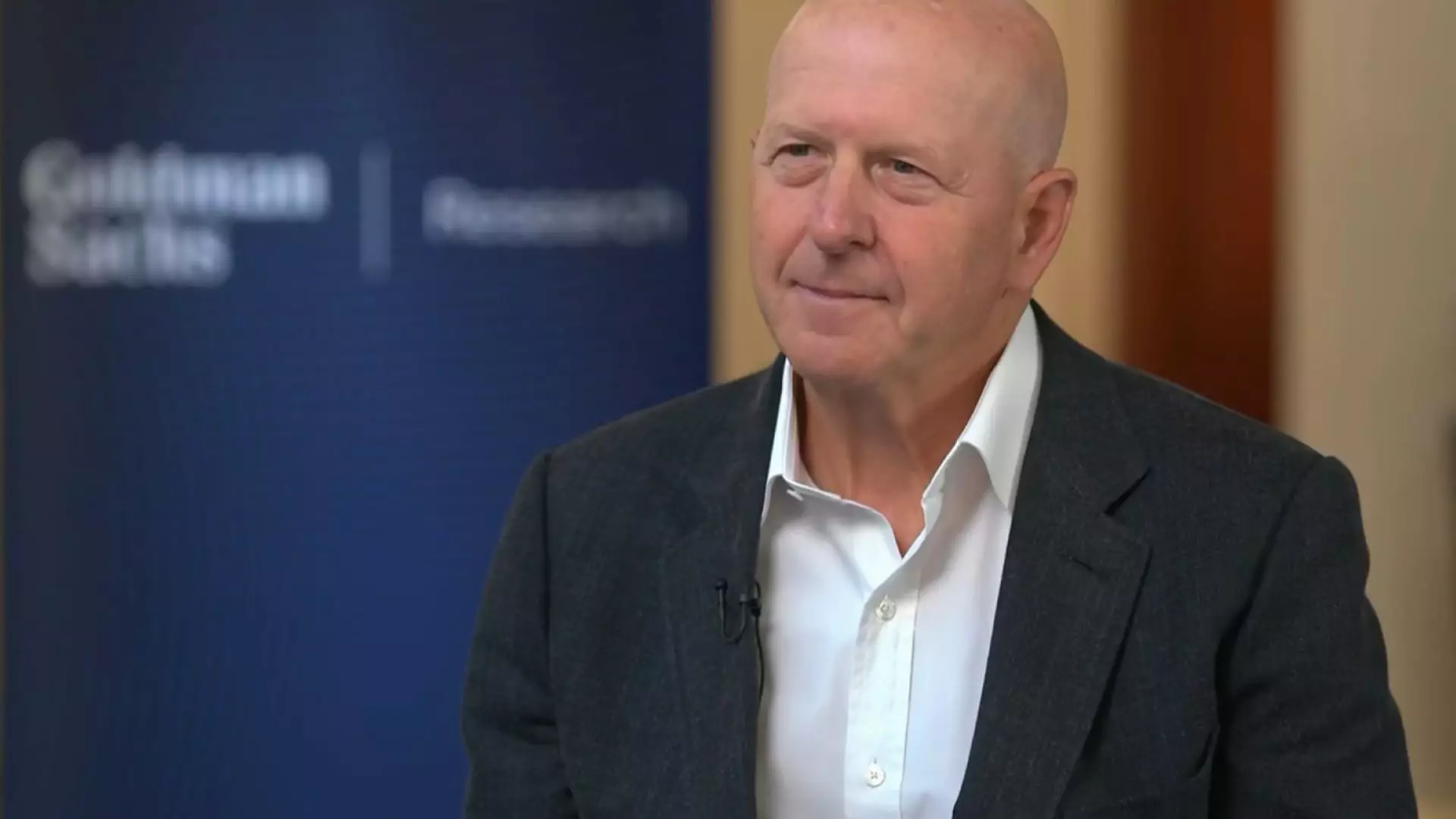In an era where financial institutions are continuously scrutinized for sustainability, Goldman Sachs has once again proven its mettle by surpassing analysts’ forecasts. The recent report revealed a significant uptick in earnings to $14.12 a share, exceeding the predictions of $12.35. The driving force behind this impressive performance? A staggering 27% increase in equities trading revenue, which accounted for almost $540 million more than analysts expected. In an economic climate fraught with uncertainty—especially considering the erratic policies of the current administration—such a robust performance not only highlights Goldman’s agility but also emphasizes the central role equities trading plays in its portfolio, suggesting that this might be the bank’s bulwark amid fluctuating financial tides.
Weaknesses Hidden in the Shadows
Yet, while Goldman Sachs might be basking in the glow of its equities success, the numbers tell a more nuanced story. The firm’s fixed income division, which traditionally provided a more stable revenue source, only managed a meager 2% growth year-over-year to $4.4 billion, falling short of the $4.56 billion analysts anticipated. Furthermore, advisory revenue—a critical component of investment banking—plummeted by 8%. This decline is not merely a statistic; it underscores a trend of diminishing trust among investors and uncertainty among corporate clients, driven in good part by the trade disputes instigated by the Trump administration. As CEO David Solomon noted, the operating environment is markedly different than in previous quarters, revealing the fragility that underpins this success.
A Declining Landscape for Wealth Management
Equally concerning is the decline seen in Goldman’s asset and wealth management division, where revenue dwindled by 3% to $3.68 billion. This cohort’s performance is crucial; it serves as a litmus test for how well Goldman can navigate the complexities of diverse financial management in turbulent economic waters. The figures indicate significantly lower revenue from investments, whether in private equity or public stocks, sending a strong signal that confidence in long-term holdings may be waning. If clients are hesitant to lean on Goldman for wealth management during tumultuous times, it raises critical questions about the bank’s strategic direction. In an age where trust is paramount, the declining revenue can be interpreted as a vote of no confidence in the existing administration’s economic strategies.
The Broader Market Context
Goldman’s performance stands in stark contrast to its competitors, such as JPMorgan Chase and Morgan Stanley, both of which reported extraordinary gains in equities trading, with revenue surging by 48% and 45%, respectively. This discrepancy forces a conversation about whether Goldman is navigating a slowly sinking ship or merely facing a cyclical downturn that many banks are dodging. The volatility induced by the current administration’s policies seems to have further polarized outcomes among financial giants. As traders capitalize on market swings, it raises a troubling question: Is Goldman failing to seize opportunities that its rivals are effectively exploiting?
A Call for Strategic Resilience
What does this mean for the future? As Solomon himself has indicated, the firm remains confident in its ability to support clients, but the pressure to adapt to a rapidly changing landscape is mounting. The shifts in revenue streams hint at larger systemic issues that may require a reevaluation of Goldman Sachs’ long-term strategy. As they grapple with internal pressures and external volatility, a recalibration that leans more toward client-oriented solutions in investment banking could hold keys to mitigating risks moving forward.
Though Goldman Sachs is positioned as a heavyweight in the financial arena, its recent results depict a company caught between impressive equities performance and concerning declines elsewhere. In a time of heightened market dynamism, one constant remains: adaptability will be vital. The next moves taken by Goldman will either confirm its resilience or reveal a fissure that could lead to turbulent waters ahead.

